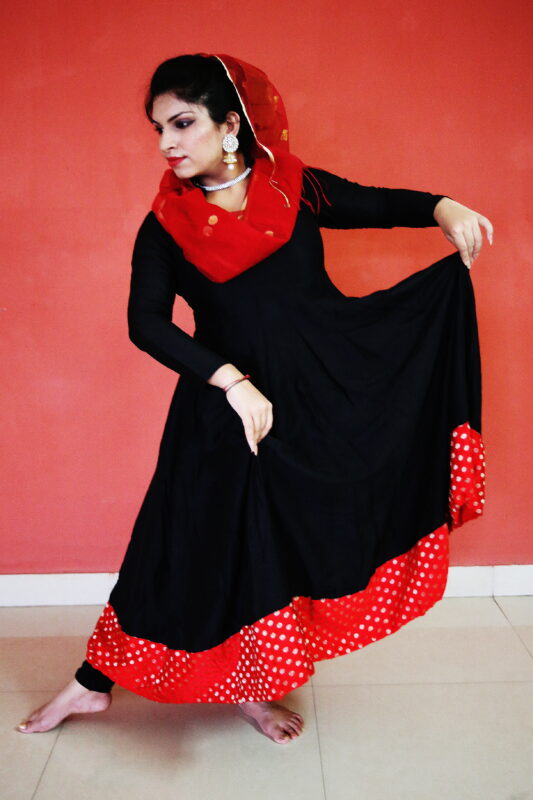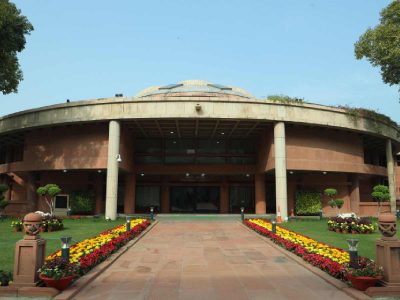An accomplished Indian classical dancer, choreographer, and teacher based in Edinburgh, UK is using her art-form to raise awareness about climate change.Delhi-born Himadri Madan talks to Patriot about her background in Indian classical dance, life experiences and how she became interested in environmental issues.
Q: Can you tell us about yourself and your background in Indian classical dance?
A: I am a performer, choreographer and a dance teacher based in Edinburgh, UK. I am trained in Bharatanatyam and Kathak and I studied BA in choreography from Natya Institute of Kathak and Choreography where I learnt the art of Indian classical choreography under late Guru Maya Rao. I graduated with BA in 2015 and since then, I worked as an Indian classical choreographer and performer in Bangalore before I went to UK to pursue MFA (Master in Fine Arts) in choreography to learn the skill of post-modern contemporary choreography at Trinity Laban Conservatoire of Music and Dance.
Q: How did you first become interested in using dance as a means to spread awareness about climate change?
A: While I was doing MFA in choreography, my practice as a choreographer became centred around socially and politically relevant themes. I was always inspired by the quote that “art is the mirror of society” and I began wanting to tell stories of the present and contribute to conversations around important contemporary themes impacting all of us. In 2020, I came across the climate clock. Seeing that we only had about seven years till the increase in temperature becomes irreversible compelled me to do something. As art is the only medium I have, I reached out to my colleagues at Theiya Arts and we decided to create this performance to speak about how humankind’s relationship with nature has changed over the years.
Q: What inspired you to bring your climate change message to the Edinburgh Festival Fringe and the Edinburgh Multicultural Festival?
A: Edinburgh Festival Fringe is one of the biggest celebrations of art and culture and it brings artists and audiences from all the world together. As the intention behind this performance was to initiate conversation around climate change and the climate clock, Edinburgh Festival Fringe was an ideal platform to reach a wide and diverse audience.
Similarly, Edinburgh Multicultural Festival is a prestigious festival and gives us the opportunity to reach a wide range of audience.
Q: Can you describe the process of creating a dance performance with a specific message or theme like climate change?
A: The movement and choreography for this performance was drawn from the movement archive of South Asian classical dance forms. The performance included movements based on Kathak, Bharatanatyam, Kuchipudi and Kandyan dances. The practices depicted and explored in the choreography emerged from a process of research and development where the artists immersed themselves in exploring their own cultural, historical and personal relationships with the natural world.
Further, it was important that all artists got involved to emphasise that we were not trying to answer the complex question of how to solve the complex issue related to climate. Instead, it was just an effort to contribute to the ongoing conversation. And to support the audience. Even after the show had ended, we created a resource list to give the audience a flexible and wide choice to either start or continue their effort in whatever capacity they would like.
Q: How do you hope your performances will impact audiences, and encourage them to take action on climate change?
A: The intention behind this performance was to contribute to the ongoing conversation about climate change. The performance speaks of how with time our relationship with nature has changed. It goes on a journey through time and tells stories from south Asian classical dance forms that depict how lives were intertwined with nature when these art forms were created and then paints a picture of how our lives look now. We hope that the audience also finds space to reflect on this changing relationship and its impact on the world.
But we were also aware that the theme of the performance could be distressing and overwhelming for some. So, at the end of the show we shared a resource list with the audience to support the cause in any way they could. The list included options of waste-free shopping, online petitions, podcasts and documentaries giving the audience the option to respond in whatever way they could, whether by supporting waste-free businesses or by learning more about the issue.
Q: What role do you think the arts can play in raising awareness about environmental issues?
A: I believe art can be a powerful tool for raising awareness about climate change. It has the ability to communicate complex issues in a way that is emotionally engaging and can reach a broader audience. By using visual and sensory elements, art can inspire people to reflect, learn and join the movement to protect the planet.
Q: What other projects or performances are you currently working on?
A: I am presently working on a new solo performance called ‘The Gaze – you, me, us and them’ as a choreographer and a performer. The performance delves into my experience as a woman and explores the themes of internalised shame. It is in its early stages and will be performed later this year. I am also looking forward to developing the ‘The ticking clock’ further as a part of Theiya Arts Dance Collective and delving deeper into the decolonial perspectives around climate change.
Q: How do you see your art evolving in the future, particularly in relation to climate change advocacy?
A: I think doing this project has made me conscious about climate in all my work. Even if the work is not based on the theme of climate change, the ethos of sustainability is built into my approach now. I opt for eco-friendly options of travel, equipment and material. I prefer to recycle/upcycle costumes, props where possible. I believe it’s important to rethink our approach to performance and I will work towards a sustainable future as an artist.

Q: Are there any particular challenges or opportunities you have encountered as an Indian classical dancer working in the UK?
A: I believe the art scene in UK gave me the opportunity to bring new perspectives to my work. My experience in India was as an Indian classical dancer and rooted in telling stories from the traditional epics. My education in UK gave me the opportunity explore new dimensions of being able to tell stories of contemporary context. It challenged me to think outside my usual practice sometimes, which while being difficult, was also rewarding.
Q: What advice would you give to aspiring dancers or artists who want to use their talents to make a positive impact on the world?
A: I often find it difficult to advise other artists because every individual’s journey is different. However, if I had to share something it would be that all kinds of artists have the potential to be activists. Even the smallest act of activism can be impactful.
Q: Do you know of any other dancers who use their art to raise awareness about climate change in India?
A: I believe there are a lot of wonderful artists whose work is rooted in conversations about climate change in India. At this moment I can recall Pooja Pant ji, I don’t know her personally but I follow her work on social media and her work often brings climate change to forefront.
Q: What does Delhi mean to you? How has the city shaped your upbringing?
A: Delhi is a vibrant city with so much to offer. As an aspiring dancer growing up in Delhi, I had so many learning opportunities and I got exposure to all kinds of dance forms from Indian classical to Jazz and Hip Hop. Emotionally, Delhi will always be home to me.





